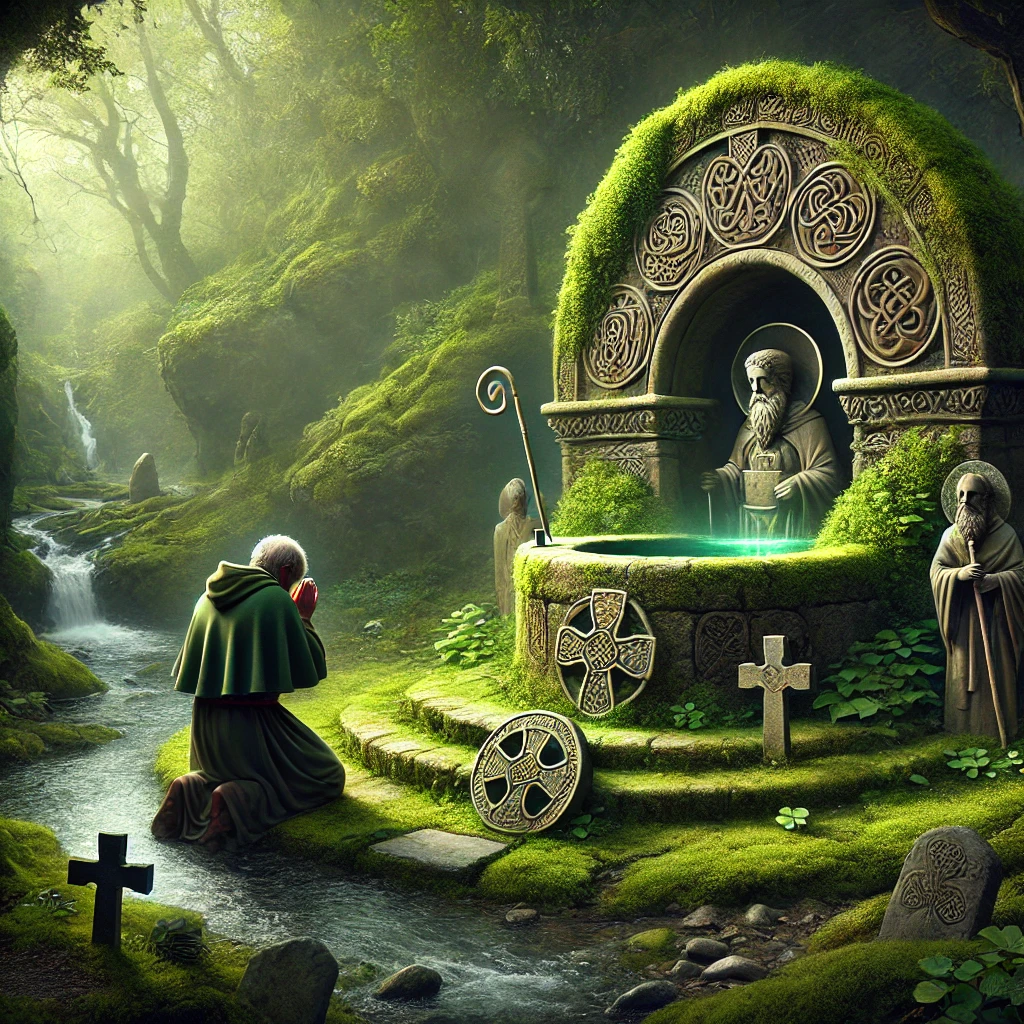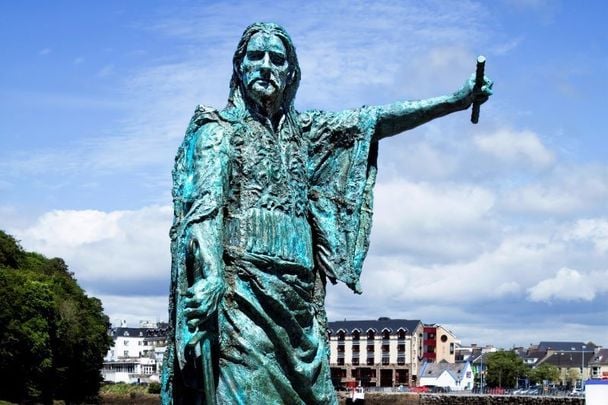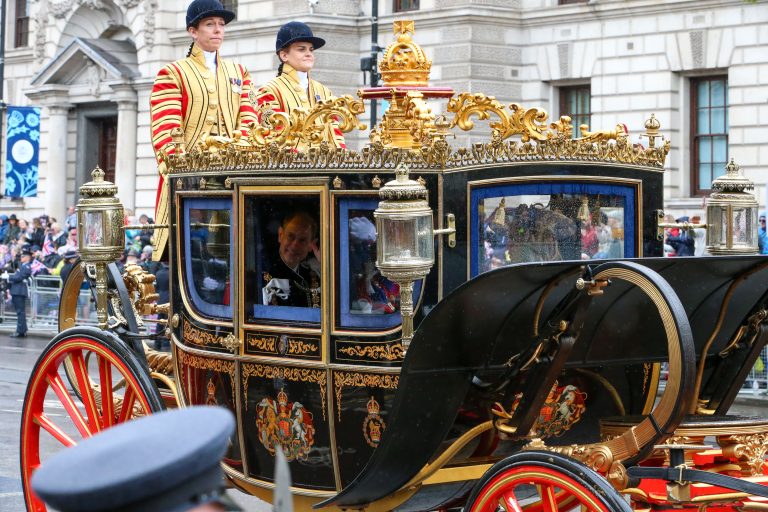
Before cathedrals rose and pulpits echoed, Ireland’s soul was nourished not by marble but by stone circles, whispering woods, and above all, by the ancient holy wells—where the veil between worlds thinned, and healing flowed straight from the land itself. These sacred springs were not just puddles in the earth; they were portals of power, imbued with memory, myth, and the blessings of Saint Patrick himself.
To walk the path of Ireland’s holy wells is to trace the beating pulse of pre-Christian belief intertwined with Christian transformation—where druids once prayed to the spirits of nature, and saints later consecrated the same waters in the name of Christ.
Explore the divine armor of Ireland’s patron saint with Saint Patrick’s Breastplate: The Warrior’s Prayer That Shielded a Nation, and discover more about the revolutionaries, mystics, and rebels who carried that spirit through history: Michael Collins, Dan Breen, The IRA Squad, Eamon de Valera, and Irish Immigration.
What Are Saint Patrick’s Holy Wells?
Scattered across Ireland’s landscape like glistening relics, these holy wells are natural springs associated with Saint Patrick’s blessings, baptisms, miracles, and conversions. Many predate Christianity itself — sacred to pagan tribes long before Patrick walked the land. But after Patrick’s arrival, they were baptized anew, reimagined as sources of healing, purification, and divine presence.
At each well, it’s said, Patrick left not only water—but fire: the fire of faith, endurance, and grace.
Where Are These Wells Found?
They’re everywhere — in fields, forests, tucked behind churches, hidden in hillsides and glens. Among the most visited:
🔹 St. Patrick’s Well, Clonmel (Tipperary) – Said to be one of the largest holy wells in Ireland. A haven of serenity and devotion.
🔹 St. Patrick’s Well, Oranmore (Galway) – A place of pilgrimage and whispered prayer, with stone steps descending into living waters.
🔹 St. Patrick’s Well, Downpatrick (County Down) – Near the saint’s reputed burial place, this is a well of deep spiritual resonance.
Each of these sites is not just a location — it’s a story, a testimony, and a mirror to Ireland’s spiritual DNA.
What Were Holy Wells Used For?
Originally, these wells were places of pagan ritual and nature worship. Later, they became Christian pilgrimage sites used for:
- Healing illnesses (especially eye, limb, and skin ailments)
- Baptisms
- Spiritual renewal and reflection
- Penitential acts and votive offerings
Devotees still leave coins, rosary beads, rags, or crosses at wells — each one a silent prayer, a whispered plea for mercy or blessing.
Did Saint Patrick Really Visit All These Wells?
Historically? Perhaps not. Spiritually? Absolutely.
Saint Patrick’s name became woven into the tapestry of Ireland’s spiritual geography, whether or not he physically stood at each stone. His symbolic presence sanctified the existing sacredness—a merging of the old and new, the druidic and the divine.
Wherever a spring flowed, the people saw God’s hand, and Patrick’s spirit was never far behind.
Are Holy Wells Still Used Today?
Yes. These wells are very much alive in Irish tradition today. Pilgrims still visit them, especially on St. Patrick’s Day, Pattern Days, and local feast days, reciting prayers, walking “rounds” (ritual circular paths), and immersing hands or relics in the water.
The spiritual hunger never left — it just put on modern clothes.
What Is the Connection Between Holy Wells and Saint Patrick’s Breastplate?
The Breastplate Prayer and the holy wells are two sides of the same coin. One invokes divine protection, the other channels divine healing. Together, they form a spiritual map — a path that runs from sacred word to sacred water.
The wells are physical — tangible — the Breastplate is ethereal — poetic. But both are armors of the Irish soul, forged not in steel but in spirit.
👉 Revisit the prayer that shields like water sanctifies: Saint Patrick’s Breastplate Prayer
Final Thoughts: Where Stone Meets Spirit, Water Meets Word
In a world of noise and neon, Ireland’s holy wells still whisper. They whisper of wounds healed, of faith kept, of saints and rebels, of land that never forgot its soul.
So when next you walk the countryside and stumble upon a mossy stone circle with water trickling from beneath, stop. Bend. Feel the weight of ancient prayer in that small, cold touch.
Because whether it’s a rebel with a rifle or a pilgrim with a prayer, Ireland has always found strength in what flows beneath — and above.
Sláinte, and walk well. ☘️ Would you like a powerful visual image to accompany this blog?






1 thought on “Ireland’s Ancient Holy Wells of Saint Patrick: Echoes of Spirit, Stone, and Sacred Water”
Comments are closed.